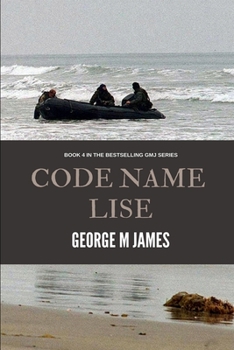Code Name Lise
Select Format
Select Condition 
More by Philip R. Bevington
Book Overview
In Code Name Lise, we deal with the idea of sinking warships with shore-bound artillery. It can be done and was done before, but you need the ships to be near, at a dangerously close range. They must be ambushed unexpectedly and destroyed, or you will be in deep trouble, as they call in heavy airstrikes or use their long-range weapons to maximum effect. The major problem you may face in this scenario is the air threat. All modern warships are armed with helicopters and South African warships at times have the Denel Rooivalk attack helicopter on them. This helicopter is deadly and feared for good reason. It is rated by many to be better than the more famous US Apache Longbow.The question I wanted to be answered in this book was to see if a Rooivalk attack beast can be shot down, and if so, how. They are protectively armoured against 23mm shells, they are faster than an Apache and their pilots are aggressive fellows. You will normally not get close enough to shoot a Rooivalk down, she can see in the darkness and she has deadly missiles outranging any MANPAD or anti-aircraft gun. Her ECM and E-ECM systems are world-class. Thus, you must surprise her and get close enough to down her in the first few shots or you are dead when she counter-attacks. However, there is a way, a maskirovka.Description: After sinking a South African Navy frigate in an epic gun battle in the Mozambican Channel, former Police Special Forces Company Commander, Geoffrey Foxtrot, now Egg Breaker Ground Commander, is heading down south with his fellow Egg Breakers intending to ambush a squadron of naval fast attack craft that is coming north to investigate the sinking of the frigate. To get them close enough and inside gun range, he "abandons" the Q-ship, the EBS Orlando, on a deserted beach, a maskirovka designed to bring the fast attack craft towards the ambush site. For political reasons, he must cross the border into South Africa and spring a naval ambush from northern Zululand and thus taking the chance of meeting with superior South African ground forces, a fight he cannot possibly win. To make matters worse, a South African Denel Rooivalk is escorting the naval vessels and constitutes a major threat, she must be shot down quickly or she will destroy him and his men. With his wife, the former South African Secret Service Counter-Terrorism Head until she defected in Code Name VFO565, a pregnant Angelique Dawson-Foxtrot injured and dying from wounds received during an ambush in Code Name Phoenix, he needs to dig deep to accomplish his mission. The ambush takes place and the Egg Breakers try to escape with the Q-ship, but they are found by South African Air Force Gripen fighter jets and sunk. As the men swim for their lives, they are strafed mercilessly. Things are looking grim for all our heroes, Foxtrot, Geelslang and the pregnant Angelique.If you wish to read about Covert and Special Forces Operations in sub-Saharan Africa, the GMJ Books are the place to start. You will learn about covert operations, Special Forces techniques and military history not known outside the select few. Code Name Lise is the 4th book in the popular GMJ Series.
Format:Paperback
Language:English
ISBN:1517335515
ISBN13:9781517335519
Release Date:December 2014
Publisher:Createspace Independent Publishing Platform
Length:394 Pages
Weight:0.90 lbs.
Dimensions:0.8" x 6.0" x 9.0"
Customer Reviews
5 customer ratings | 5 reviews
There are currently no reviews. Be the first to review this work.






















